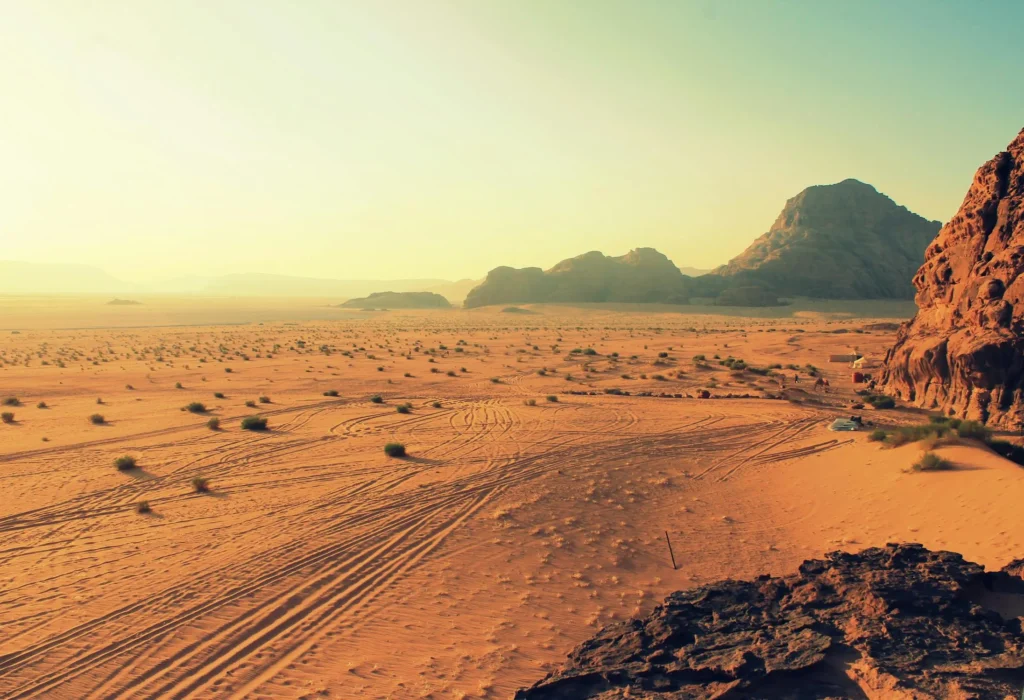
The idea of making a desert more habitable for humans would have seemed an impossible one just a decade ago. After all, you’d have to make them greener, cultivable, and full of water to do so. Hence, the more you think about it, the more absurd this idea of making desert areas habitable sounds.
But Saudi Arabia seems to be doing it. Yes, it is turning its arid desert sand into lush blooming soil, making it habitable. So has technology really come this far that we’re turning deserts into green, habitable land? In a way, yes.
Technology can help make deserts more habitable for humans, and here’s how.
Ensuring Clean Drinking Water
Much like Saudi Arabia, Egypt too is working to convert its desert region in the Qattara Depression into a liveable environment. For this, they are looking to set up a £1.5 billion ‘mini Suez Canal’ to make rain in the desert.
After all, one of the biggest challenges in desert regions is access to clean drinking water. With little rainfall and minimal surface water, traditional methods of sourcing water just don’t cut it.
Solutions like underground water mapping are giving desert communities new ways to tap into water sources that were previously out of reach. These tools are tailored to the unique demands of arid environments, making every drop count.
Another breakthrough that’s generating a lot of buzz is atmospheric water harvesting. Adsorption-based systems are at the center of this innovation. These technologies work by using special materials that grab onto water molecules in the air. Once collected, the water is released into fresh water you can actually drink.
According to Atoco, water harvesting tech can generate pure water out of the atmosphere, even when relative humidity is less than 20 percent. This is super exciting as the technology doesn’t need a high-humidity environment to be effective, which makes it perfect for deserts. Thus, even in deserts, these atmospheric water harvesting systems can produce fresh water where none exists.
Keeping Homes Cool Without Overheating the Planet
Unbearably hot – that’s the perfect way to describe deserts. But what do you do? Air conditioning? Sure, but it surely isn’t the most eco-friendly solution, especially when energy is limited. Passive cooling designs and smart architecture, on the other hand, are much better solutions here.
Instead of relying solely on AC units, modern desert homes are being built with materials and layouts that naturally keep things cool. Think reflective roofing, thick adobe-style walls, and structures that allow air to circulate freely. These aren’t just design choices; they’re survival tactics reimagined through a modern lens.
Plus, energy-efficient cooling systems powered by solar panels are making it easier for people to stay comfortable without draining resources. New technologies like radiant cooling and thermally insulated coatings can dramatically reduce indoor temperatures without pushing up electricity bills.
Growing Food Where Nothing Grows
Food security is another massive hurdle when it comes to desert living. Farming in the sand seems like an impossible task, but technology is making it doable.
In deserts, right now, we have hydroponics and vertical farming leading the charge. You can utilize these systems to grow crops using just a fraction of the water traditional farming requires. Besides, you can also use them indoors or in greenhouses, so your plants stay protected from the brutal climate outside.
Sensors can help monitor soil moisture, plant health, and nutrient levels in real time, making it easier to optimize growth without wasting resources. It’s precision agriculture without the guesswork, and it’s turning barren stretches of land into productive, food-growing zones.
Tapping into Desert Sun for Energy
If there’s one thing deserts have an endless supply of, it’s sunlight. So it only makes sense to harness all that solar energy and put it to good use.
Advances in solar panel efficiency mean desert communities can rely on clean, renewable energy to power their homes, water systems, and farms. Even concentrated solar power plants, which use mirrors to focus sunlight, are being used in deserts to create electricity on a massive scale.
These technologies are unlocking the desert’s potential to not only support local communities but also contribute to broader energy grids.
We used to think of deserts as places to avoid. Too hot, too dry, too hard to live in. But thanks to some pretty amazing tech, we’re starting to see them in a different light.
At the moment, making deserts habitable isn’t just a cool sci-fi dream; it’s happening. And as climate change pushes more parts of the world toward desert-like conditions, these innovations will become essential for all of us.







Leave a Reply